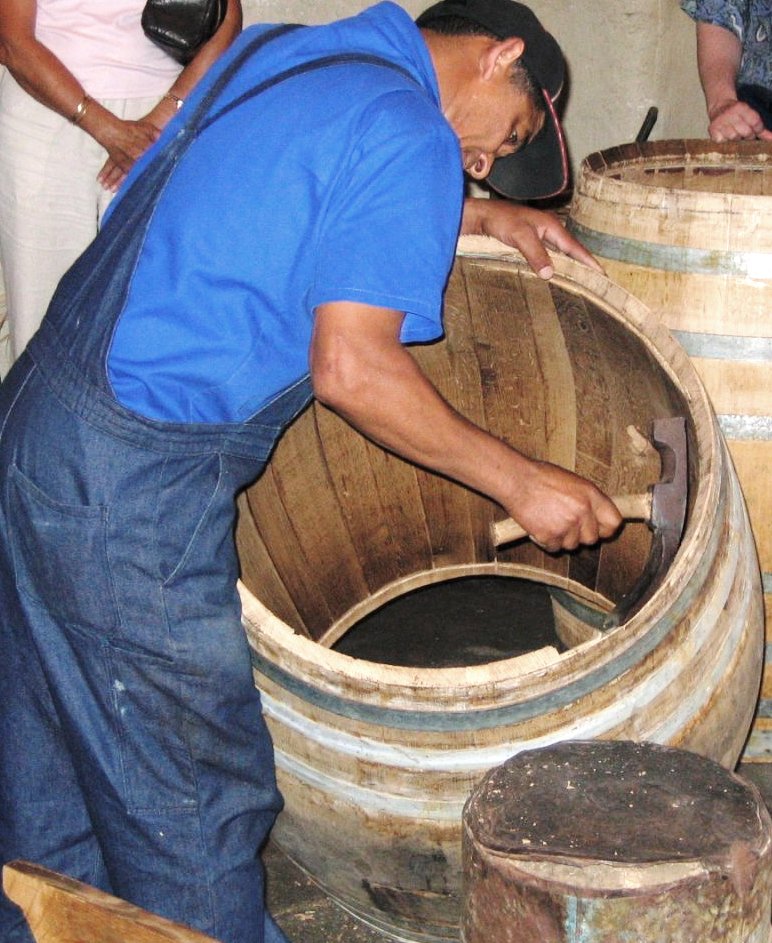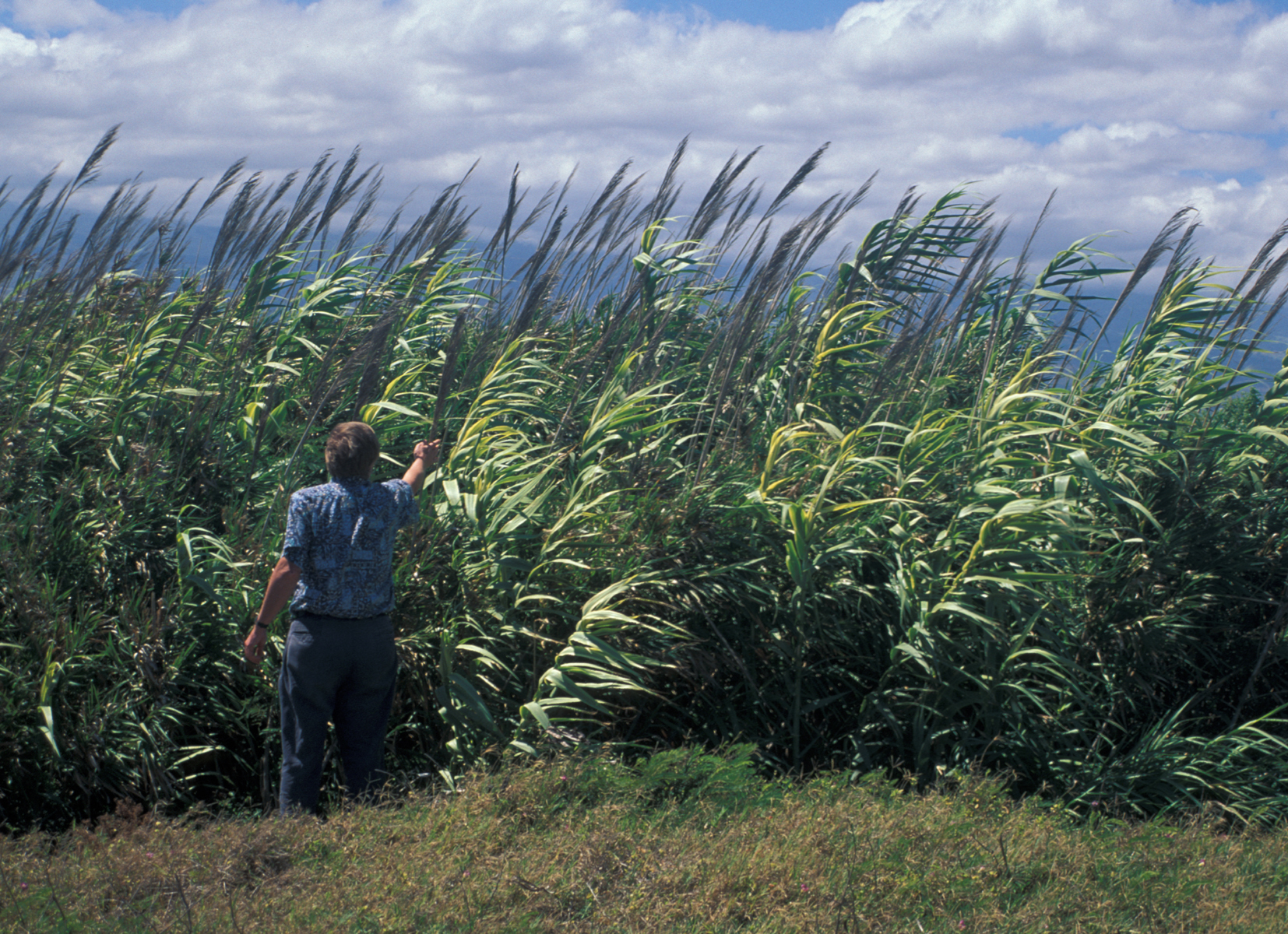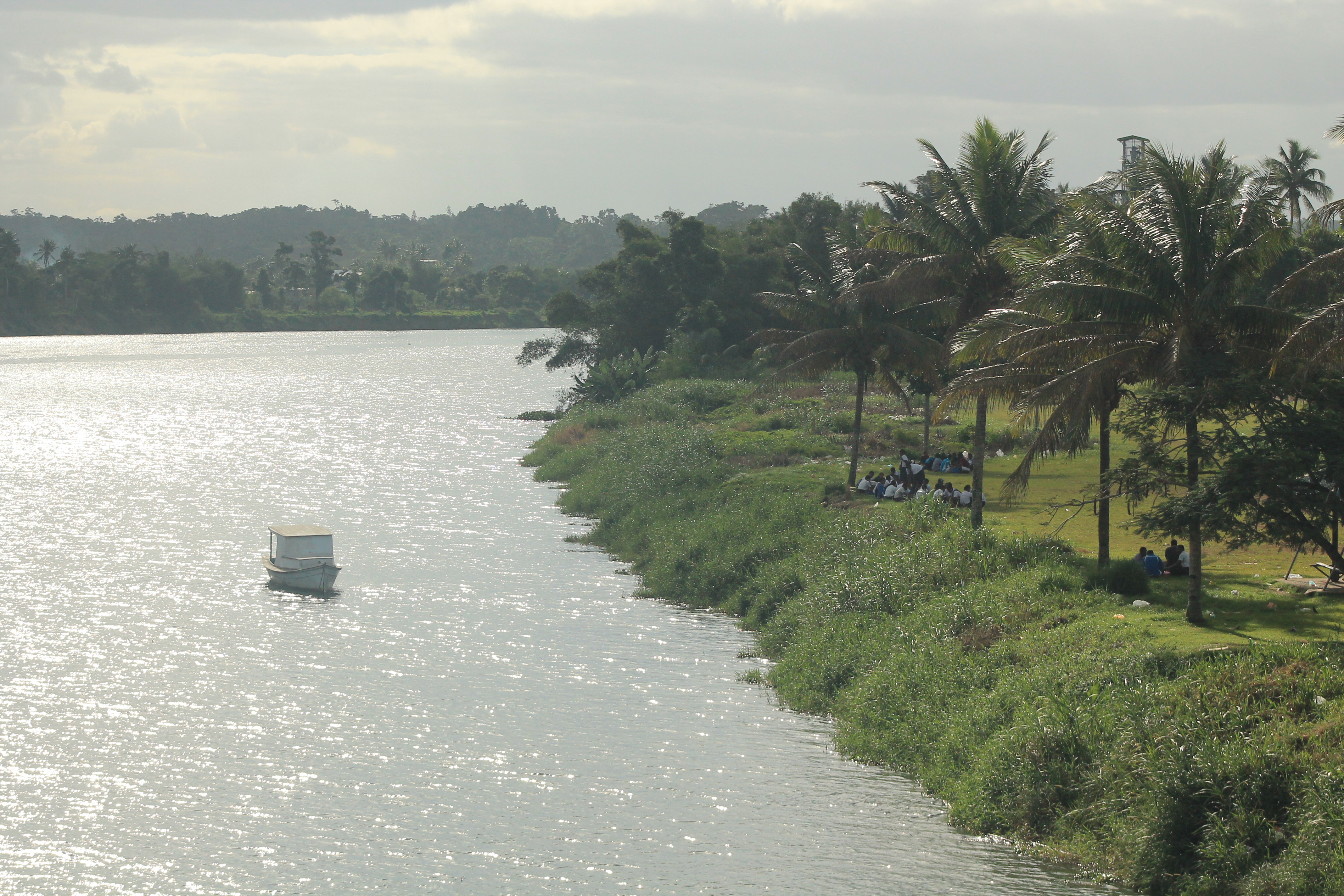|
Totaram Sanadhya
Totaram Sanadhya (1876–1947) was deceitfully recruited as an indentured labourer from India and brought to Fiji in 1893. He spent five years working as a bonded labourer but was never afraid to fight for his rights. After completing his indenture he established himself as a small farmer and a Hindu priest but spent most of his time trying to assist the less fortunate still under the bondage of indenture. He sought the help of Indian freedom fighters and missionaries and encouraged the migration to Fiji of Indian teachers and lawyers who, he believed, could improve the plight of Indians in Fiji. After living in Fiji for twenty-one years, he returned to India, in 1914, and wrote about his experience in the book, "My Twenty-One Years in the Fiji Islands" (Hindi). This book was used as the main source of information in the campaign to end the Indian indenture system. Early life Sanadhya was born in Hirangaon in the district of Firozabad, Uttar Pradesh, India in 1876. In 1887, ... [...More Info...] [...Related Items...] OR: [Wikipedia] [Google] [Baidu] |
Hirangaon
Hirangaon is a hamlet in the Firozabad Tehsil of Firozabad district of Uttar Pradesh in India India, officially the Republic of India ( Hindi: ), is a country in South Asia. It is the seventh-largest country by area, the second-most populous country, and the most populous democracy in the world. Bounded by the Indian Ocean on the .... This Jaroli Khurd comes under the Gram Panchayat. People from many communities reside in this village, called a village of Brahmins, because of being settled away from densely settled settlement and being open and peaceful, green environment and traffic problem. These are Brahmin, Jatav, Barber, Kori, Kachi, Valmiki, Brahmins, Tiwari, Srooti, Mudgal, Pathak, Joshi, Tenuguriya and Dixit are the people of Gauta. Deer village is divided into four mohallas, in which "Tiwari Mauhalla, Sototi Mauhalla, Dikshit Mauhalla, And jatav mohalla " All the people of the community live together with Ghanish Premata. Firozabad is located approximately 16 ... [...More Info...] [...Related Items...] OR: [Wikipedia] [Google] [Baidu] |
Thakur (Indian Title)
Thakur is a historical feudal title of the Indian subcontinent. It is also used as a surname in the present day. The female variant of the title is Thakurani or Thakurain, and is also used to describe the wife of a Thakur. There are varying opinions among scholars about its origin. Some scholars suggest that it is not mentioned in the Sanskrit texts preceding 500 BCE, but speculates that it might have been a part of the vocabulary of the dialects spoken in northern India before the Gupta Empire. It is viewed to have been derived from word ''Thakkura'' which, according to several scholars, was not an original word of the Sanskrit language but a borrowed word in the Indian lexis from the Tukhara regions of Inner Asia. Another view-point is that ''Thakkura'' is a loan word from the Prakrit language. Scholars have suggested differing meanings for the word, i.e. "god", "lord", and "master of the estate". Academics have suggested that it was only a title, and in itself, did not g ... [...More Info...] [...Related Items...] OR: [Wikipedia] [Google] [Baidu] |
Pundit (India)
A Pandit ( sa, पण्डित, paṇḍit; hi, पंडित; also spelled Pundit, pronounced ; abbreviated Pt.) is a man with specialised knowledge or a teacher of any field of knowledge whether it is shashtra (Holy Books) or shastra (Weapons) in Hinduism, particularly the Vedic scriptures, dharma, or Hindu philosophy; in colonial-era literature, the term generally refers to Brahmins specialized in Hindu law. Pandits (Brahmins) is the highest varna or class of sanatan dharma. Brahmins are both martial and preacher community. This community inculdes many surnames like Tyagi, Bhumihar, Mohyal, Chibber etc. Pandits can do agriculture also as they are among the biggest Zamindar (landlord) communities of India. Whereas, today the title is used for experts in other subjects, such as music. Pundit is an English loanword meaning "an expert in a particular subject or field who is frequently called upon to give their opinions to the public". Ustad is the equivalent tit ... [...More Info...] [...Related Items...] OR: [Wikipedia] [Google] [Baidu] |
Suva
Suva () is the capital and largest city of Fiji. It is the home of the country's largest metropolitan area and serves as its major port. The city is located on the southeast coast of the island of Viti Levu, in Rewa Province, Central Division. In 1877, the capital of Fiji was moved to Suva from Levuka, the main European colonial settlement at the time, due to its restrictive geography and environs. The administration of the colony was transferred from Levuka to Suva in 1882. As of the 2017 census, the city of Suva had a population of 93,970, and Suva's metropolitan area, which includes its independent suburbs, had a population of 185,913. The combined urban population of Suva and the towns of Lami, Nasinu, and Nausori that border it was around 330,000: over a third of the nation's population. (This urban complex, excluding Lami, is also known as the Suva-Nausori corridor.) Suva is the political, economic, and cultural centre of Fiji. It is also the economic and cul ... [...More Info...] [...Related Items...] OR: [Wikipedia] [Google] [Baidu] |
Photography
Photography is the visual art, art, application, and practice of creating durable images by recording light, either electronically by means of an image sensor, or chemically by means of a light-sensitive material such as photographic film. It is employed in many fields of science, manufacturing (e.g., photolithography), and business, as well as its more direct uses for art, film and video production, recreational purposes, hobby, and Mass communication, mass communication. Typically, a Lens (optics), lens is used to focus (optics), focus the light reflected or emitted from objects into a real image on the light-sensitive surface inside a camera during a timed Exposure (photography), exposure. With an electronic image sensor, this produces an Charge-coupled device, electrical charge at each pixel, which is Image processing, electronically processed and stored in a Image file formats, digital image file for subsequent display or processing. The result with photographic emulsion is ... [...More Info...] [...Related Items...] OR: [Wikipedia] [Google] [Baidu] |
Metalwork
Metalworking is the process of shaping and reshaping metals to create useful objects, parts, assemblies, and large scale structures. As a term it covers a wide and diverse range of processes, skills, and tools for producing objects on every scale: from huge ships, buildings, and bridges down to precise engine parts and delicate jewelry. The historical roots of metalworking predate recorded history; its use spans cultures, civilizations and millennia. It has evolved from shaping soft, native metals like gold with simple hand tools, through the smelting of ores and hot forging of harder metals like iron, up to highly technical modern processes such as machining and welding. It has been used as an industry, a driver of trade, individual hobbies, and in the creation of art; it can be regarded as both a science and a craft. Modern metalworking processes, though diverse and specialized, can be categorized into one of three broad areas known as forming, cutting, or joining processes. M ... [...More Info...] [...Related Items...] OR: [Wikipedia] [Google] [Baidu] |
Carpentry
Carpentry is a skilled trade and a craft in which the primary work performed is the cutting, shaping and installation of building materials during the construction of buildings, ships, timber bridges, concrete formwork, etc. Carpenters traditionally worked with natural wood and did rougher work such as framing, but today many other materials are also used and sometimes the finer trades of cabinetmaking and furniture building are considered carpentry. In the United States, 98.5% of carpenters are male, and it was the fourth most male-dominated occupation in the country in 1999. In 2006 in the United States, there were about 1.5 million carpentry positions. Carpenters are usually the first tradesmen on a job and the last to leave. Carpenters normally framed post-and-beam buildings until the end of the 19th century; now this old-fashioned carpentry is called timber framing. Carpenters learn this trade by being employed through an apprenticeship training—normally 4 years ... [...More Info...] [...Related Items...] OR: [Wikipedia] [Google] [Baidu] |
Fijian Language
Fijian (') is an Austronesian language of the Malayo-Polynesian family spoken by some 350,000–450,000 ethnic Fijians as a native language. The 2013 Constitution established Fijian as an official language of Fiji, along with English and Fiji Hindi and there is discussion about establishing it as the "national language". Fijian is a VOS language. Standard Fijian is based on the speech of Bau, which is an East Fijian language. A pidginized form is used by many Indo-Fijians and Chinese on the islands, while Pidgin Hindustani is used by many rural ethnic Fijians and Chinese in areas dominated by Indo-Fijians. History Phonology The consonant phonemes of Fijian are as shown in the following table: The consonant written has been described as a prenasalized trill or trilled affricate . However, it is only rarely pronounced with a trilled release; the primary feature distinguishing it from is that it is postalveolar, , rather than dental/alveolar. The sounds ... [...More Info...] [...Related Items...] OR: [Wikipedia] [Google] [Baidu] |
Cane (grass)
Cane is any of various tall, perennial grasses with flexible, woody stalks from the genera ''Arundinaria'', Scientifically speaking, they are either of two genera from the family Poaceae. The genus ''Arundo'' is native from the Mediterranean Basin to the Far East. The genus Arundinaria is a bamboo (''Bambuseae'') found in the New World. Neither genus includes sugarcane (genus ''Saccharum'', tribe Andropogoneae). Cane commonly grows in large riparian stands known as canebrakes, found in toponyms throughout the Southern and Western United States; they are much like the tules (''Schoenoplectus acutus'') of California. Depending on strength, cane can be fashioned for various purposes, including walking sticks, crutches, assistive canes, and judicial or school canes. Where canes are used in corporal punishment, they must meet particular specifications, such as a high degree of flexibility. Cane historically has been used for many other purposes, such as baskets, furniture, boats ... [...More Info...] [...Related Items...] OR: [Wikipedia] [Google] [Baidu] |
Blackbirding
Blackbirding involves the coercion of people through deception or kidnapping to work as slaves or poorly paid labourers in countries distant from their native land. The term has been most commonly applied to the large-scale taking of people indigenous to the numerous islands in the Pacific Ocean during the 19th and 20th centuries. These blackbirded people were called Kanakas or South Sea Islanders. They were taken from places such as Papua New Guinea, the Solomon Islands, Vanuatu, Niue, Easter Island, the Gilbert Islands, Tuvalu, the Fiji islands and the islands of the Bismarck Archipelago amongst others. The owners, captains, and crews of the ships involved in the acquisition of these labourers were termed ''blackbirders''. The demand for this kind of cheap labour principally came from European colonists in New South Wales, Queensland, Samoa, New Caledonia, Fiji, Tahiti and Hawaii, as well as plantations in Peru, Mexico and Guatemala. Labouring on sugar cane, cotton, and ... [...More Info...] [...Related Items...] OR: [Wikipedia] [Google] [Baidu] |
Nausori
Nausori () is a town in Fiji. It had a population of 57,866 at the 2017 census. This makes it the fourth most populous municipality in the country. Situated 19 kilometers outside of Suva, it forms one pole of the burgeoning Suva-Nausori corridor. Nausori is home to three provinces Rewa, Tailevu and Naitasiri. The Rewa Bridge across the Rewa River, built by Fletcher Construction and opened in 2006, links Nausori to the capital, Suva. Economy There are two major business areas in Nausori - the town of Nausori proper, and Nakasi. A new market and bus terminal were opened in 2015, allowing for the town's future development. A major upgrade of the local airport, including a new terminal and a longer runway, was expected to get started in the first quarter of 2017. History The old town of Nausori was situated around 5 km north of the current one, heading towards Kasavu. The ruins of the old town, situated in Naduruloulou, are still there. Now, it is a tourist cent ... [...More Info...] [...Related Items...] OR: [Wikipedia] [Google] [Baidu] |
Colonial Sugar Refining Company (Fiji)
The Colonial Sugar Refining Company (CSR) began operations in Fiji in 1880 and until it ceased operations in 1973, had a considerable influence on the political and economic life of Fiji. Prior to its expansion to Fiji, the CSR was operating Sugar Refineries in Melbourne and Auckland Auckland (pronounced ) ( mi, Tāmaki Makaurau) is a large metropolitan city in the North Island of New Zealand. The most populous urban area in the country and the fifth largest city in Oceania, Auckland has an urban population of about I .... The decision to enter into the production of raw sugar and sugar cane plantation was due to the Company's desire to shield itself from fluctuations in the price of raw sugar needed to run its refining operations. In May 1880 Fiji's Colonial Secretary John Bates Thurston persuaded the Colonial Sugar Refining Company to extend their operations into Fiji by making available 2,000 acres (8 km²) of land to establish plantations. CSR Mills in Fiji ... [...More Info...] [...Related Items...] OR: [Wikipedia] [Google] [Baidu] |








